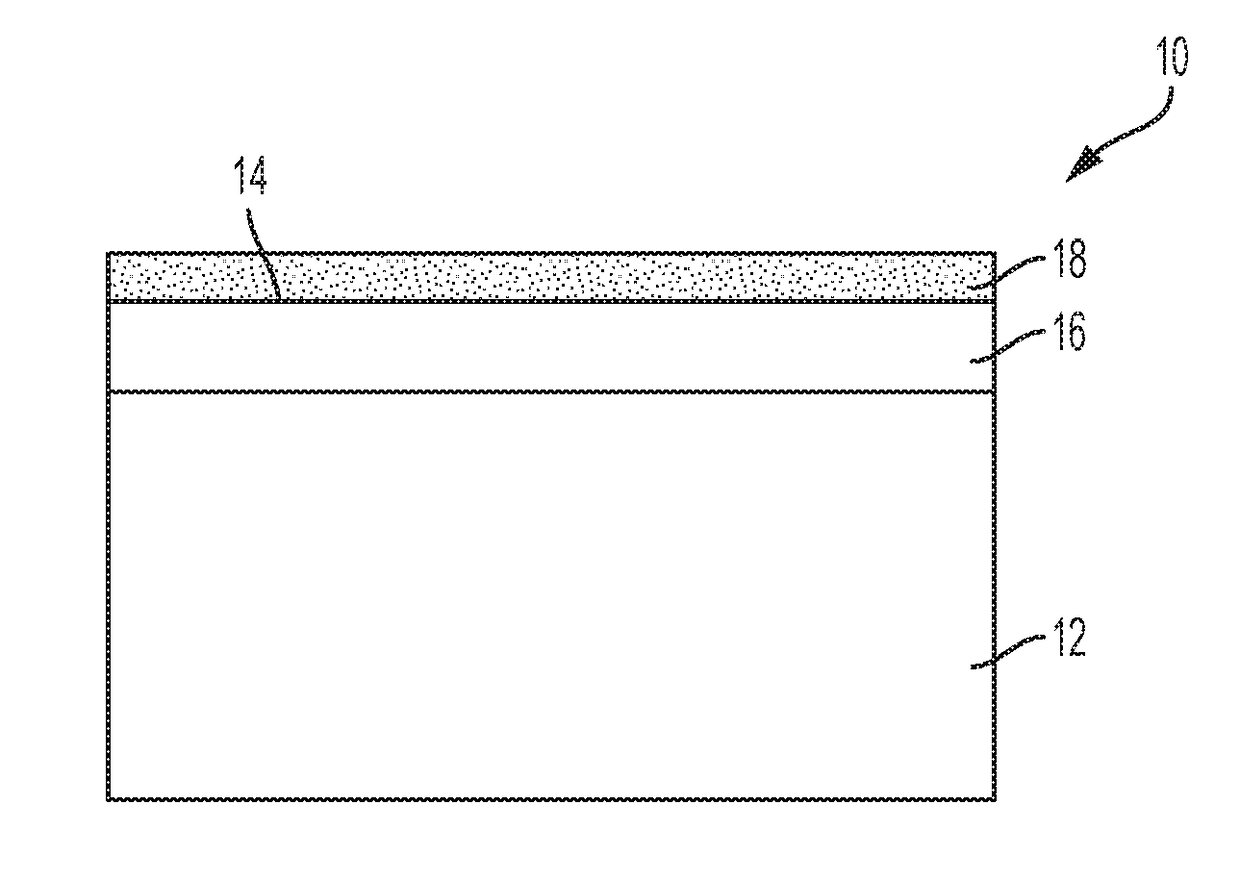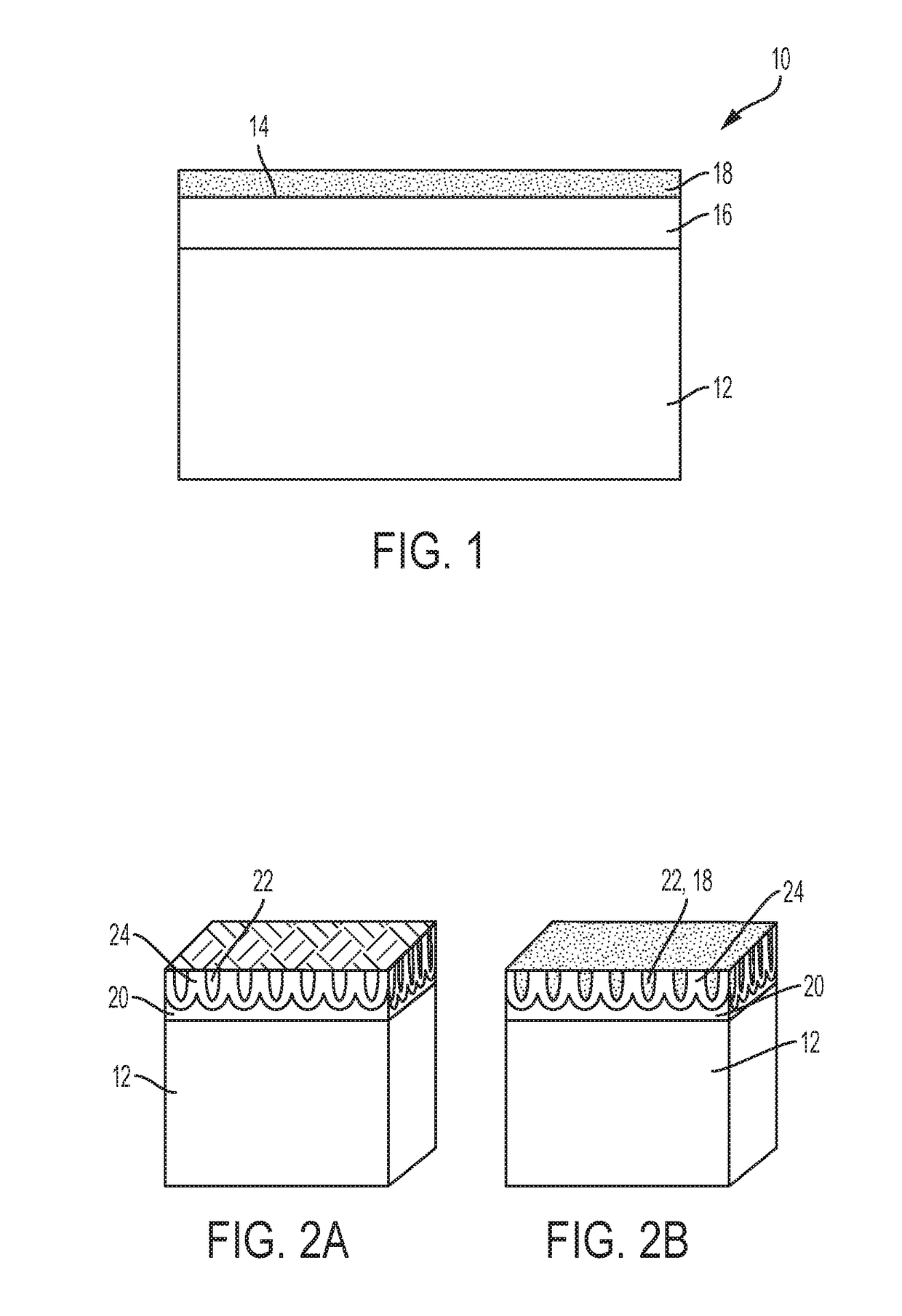Treated anodized metal article and method of making
an anodized metal and metal article technology, applied in the field of treated anodized metal article and method of making, can solve the problem of not being as effective in corrosion protection
- Summary
- Abstract
- Description
- Claims
- Application Information
AI Technical Summary
Benefits of technology
Problems solved by technology
Method used
Image
Examples
Embodiment Construction
[0011]With reference now to the Figures, FIG. 1 is a schematic depiction of a treated anodized metal article 10. As shown in FIG. 1, the article 10 includes a metal body 12 with an anodized surface 14. The metal body can be made of any anodizable metal (including both pure metals and their base metal alloys), including but not limited to aluminum, titanium, zirconium, hafnium, niobium, tantalum, tungsten, magnesium, zinc, and iron. In some embodiments, the anodizable metal can be aluminum, including aluminum alloys such as Aluminum Association Series numbered alloys in the series 1000 through 8000. In some embodiments, the anodizable metal can be in the form of a thin film (e.g., Al) that is bonded to substrate that cannot be anodized. Anodizing a metal body can be accomplished by placing the metal article in an anodizing bath comprising an electrolyte. The metal body is connected as an anode in a circuit with a cathode in the anodizing bath and an electrical power source connected ...
PUM
| Property | Measurement | Unit |
|---|---|---|
| Corrosion properties | aaaaa | aaaaa |
Abstract
Description
Claims
Application Information
 Login to View More
Login to View More - Generate Ideas
- Intellectual Property
- Life Sciences
- Materials
- Tech Scout
- Unparalleled Data Quality
- Higher Quality Content
- 60% Fewer Hallucinations
Browse by: Latest US Patents, China's latest patents, Technical Efficacy Thesaurus, Application Domain, Technology Topic, Popular Technical Reports.
© 2025 PatSnap. All rights reserved.Legal|Privacy policy|Modern Slavery Act Transparency Statement|Sitemap|About US| Contact US: help@patsnap.com


